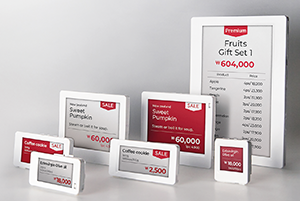

We all know the universal shopping experience where you’re in line at the grocery store and the cashier makes a request over the intercom asking for a price check on a particular item. If this hasn’t happened to you, you’re at least familiar with this situation as it has been depicted countless times over the years in the media.
It’s generally an attempt at humour – someone is making an embarrassing purchase and they’re mortified when the store is let in on their secret. Other times it’s a way to show someone in a frustratingly slow checkout line that is stopped in its tracks while the price of bubblegum is tracked down by who knows how many supermarket insiders.
Either way, this scenario has been playing out in our real lives for so long that we instantly identify with the plight of the shopper. This is a problem virtually every retail store has to deal with, and with the wide availability of network connectivity and low-cost sensors and computing technology, it’s on the verge of being solved once and for all.
South Korean-based RAINUS set out to provide retailers with a way to update prices throughout the store in real-time, maximising their operating efficiency and improving the in-store experience for shoppers. Founded in 2014, RAINUS is now one of the fastest-growing companies in the world and its products, InforTab, InforTab+ and +Touch, are bringing electronic shelf label (ESL) technology to store owners in virtually every sector, including pharmacies, health and beauty supplies and consumer electronics.
The problem that retailers in all of these areas have in common is they are all looking for ways to improve efficiency. Managing price changes for every product store-wide is time consuming and can take days to do manually, depending on how large the store is and how many different products it carries. Another challenge is reconciling pricing discrepancies between the point-of-sale (POS) system and the paper label on the product.
With InforTab, RAINUS makes it possible to update prices automatically and change them in real-time, eliminating hours of tedious manpower, through a concentric network system that requires minimum infrastructure cost and the capacity to manage a high number of ESLs.
From a shopper’s perspective, they can see the right price and information at the right time. Using near-field communications (NFC) embedded inside InforTab provides a personalised digital experience for shoppers by allowing them to use their mobile phones to access product details.
Wireless solutions ideal for electronic shelf labels
Performance was a key factor in selecting Silicon Labs as a partner for InforTab, as was finding a solution that could scale with the quantities needed for large retail stores. Silicon Labs’ FG22 wireless 2,4 GHz SoC, which features a 38,4 MHz Arm Cortex-M33 core with TrustZone and a high-performance radio, was an ideal fit due to its size, ultra-low power consumption and cost.
Leading smart retail technology innovation
The high-performance architecture of InforTab is one of the things that sets it apart from its competition. Recent benchmark testing has placed it in a leadership position among electronic shelf label technology, and these tests are leading to rapid adoption by leading retailers that have recently deployed hundreds of thousands of individual InforTab ESLs with the lowest server specification. At this time RAINUS is the only provider that can support this many ESLs with a single server system, all while providing the highest level of accuracy and robustness within the industry.
While RAINUS is focused on electronic shelf label technology, as demands grow in other sectors along with retail, the company expects to see more opportunities to integrate smart retail technologies and bring its expertise to bear on other IoT applications.
| Tel: | +27 11 608 0144 |
| Email: | sales@nuvisionelec.co.za |
| www: | www.nuvisionelec.com |
| Articles: | More information and articles about NuVision Electronics |

© Technews Publishing (Pty) Ltd | All Rights Reserved